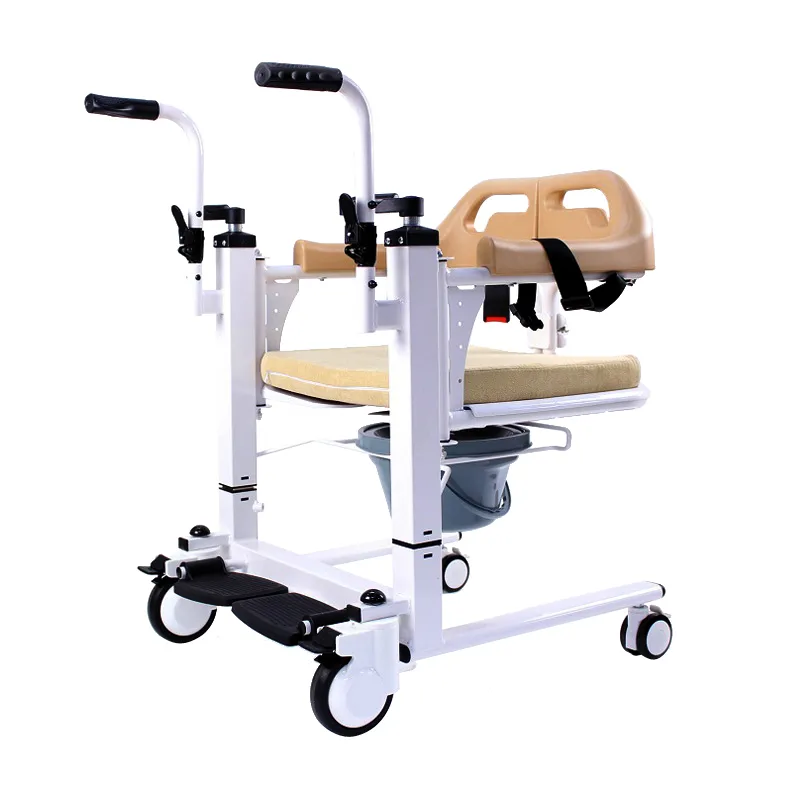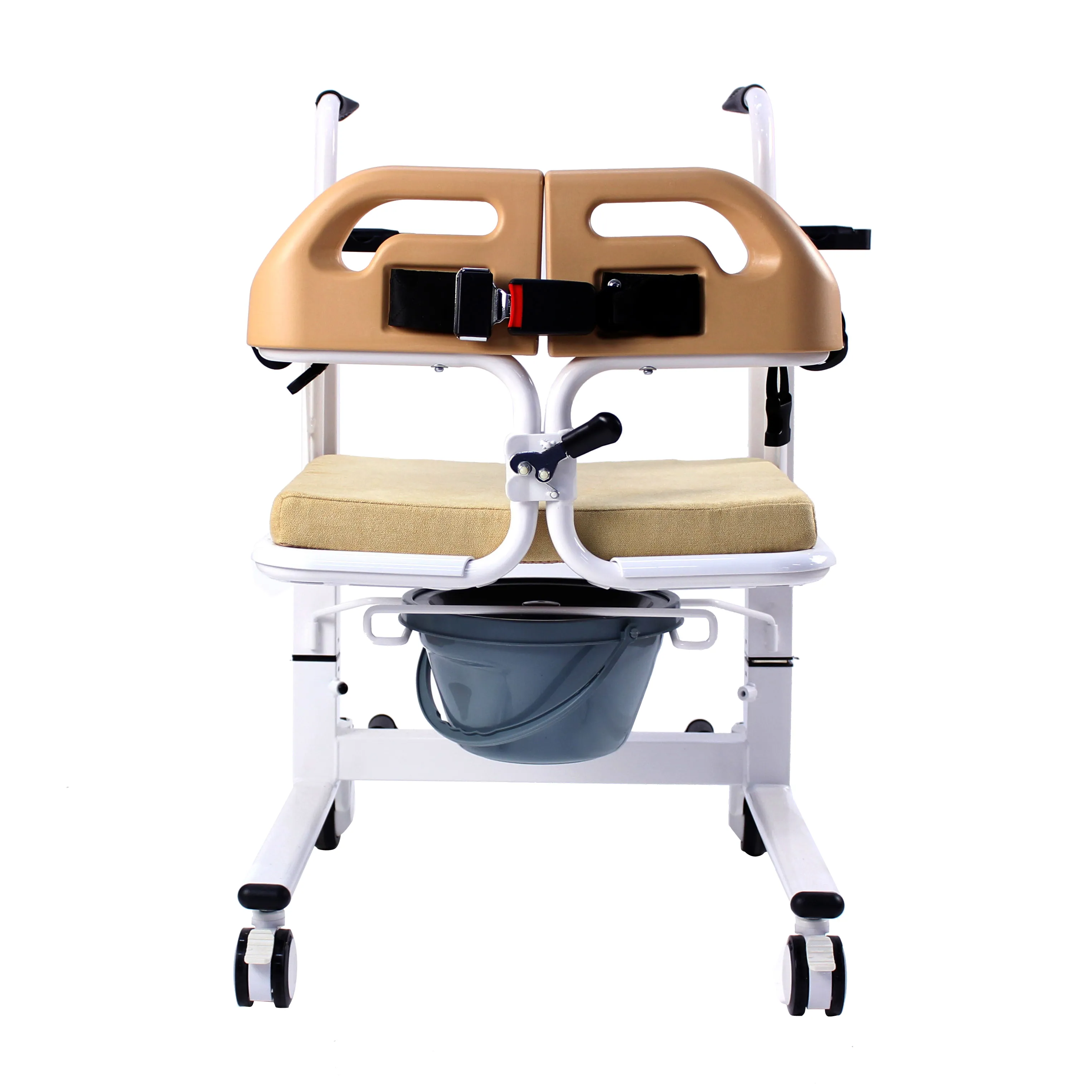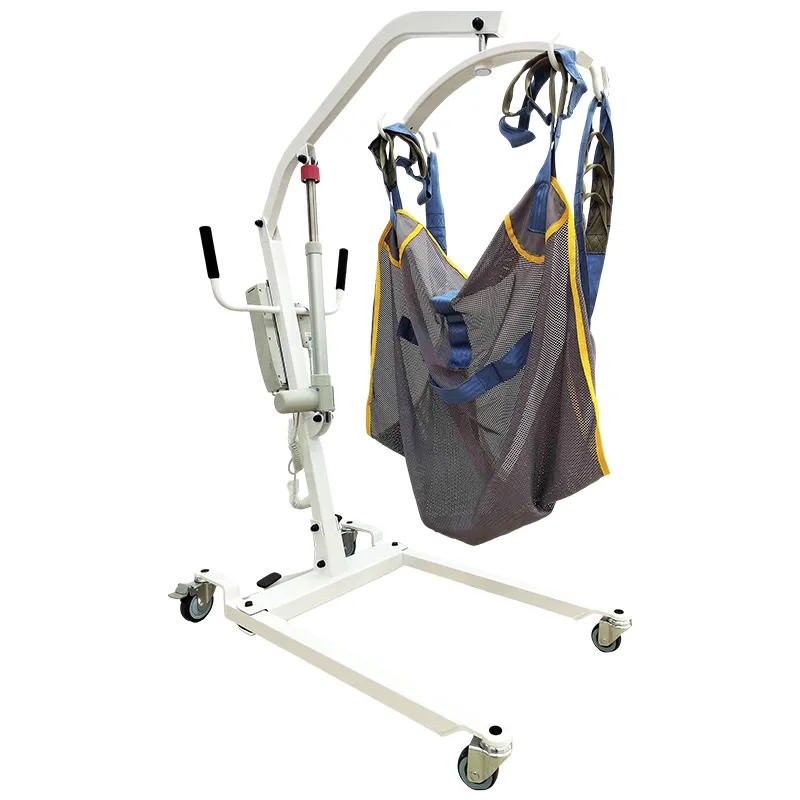In modern hospitals, rehabilitation centers, and home care settings, patient mobility and transfer are among the most frequent and challenging daily care tasks. How can we ensure smooth transfers between beds, wheelchairs, bathrooms, and examination tables while ensuring patient safety and reducing the physical burden on caregivers? This challenge has given rise to a versatile, efficient, and safe medical assistive device: the "Patient Lift Transfer Chair."
While the "Patient Lift Transfer Chair" is widely used in hospitals and nursing homes in countries like Europe, the United States, and Japan, it remains relatively unfamiliar in most developing countries, even in some primary care settings.
This article will provide an in-depth explanation of the core question, "What is a Patient Lift Transfer Chair?" We will comprehensively address multiple aspects, including its structure, operating principle, core functions, applicable populations, and usage restrictions, to provide readers with a clear understanding.

What is a Patient Lift Transfer Chair?
The patient lift transfer chair is a multifunctional nursing device designed for patients with limited mobility or incapacity. It integrates lifting, lateral transfer, toilet docking, and push-assist functions. It is primarily used for safe patient transfer and repositioning between beds and chairs, between chairs and toilets, and between examination rooms.
This device differs from both traditional wheelchairs and single-function patient lifts. Its key feature is its adjustable seat height and support structure, enabling seamless vertical and horizontal transfers, improving care efficiency and ensuring patient comfort and safety.
What are the core components of a patient lift transfer chair?
A standard patient lift transfer chair typically includes the following core components:
Component Name | Functional Description |
| Electric/Manual Lift System | Adjust the chair's height to align with beds, wheelchairs, toilets, and other equipment, allowing for vertical lift |
| Split/Sliding Seat | The seat flap opens left and right, allowing patients to slide from bed to chair, and vice versa |
| Retractable Backrest and Armrests | Provides support and facilitates transfer of patients from either side. Some models are fully removable |
| Footrest Support and Pulleys | Medical casters with brakes on the bottom allow for easy movement and secure positioning |
| Commode-Connectable System | The hollow seat structure allows for direct docking with toilets, and some models have built-in commodes |
| Safety Fixture | Includes a safety belt, knee support, and lumbar support to ensure patient safety during transfers |
Advanced models may also feature additional features such as remote lift, load cells, incontinence alerts, and displacement assist motors, suitable for patients with higher levels of care.

Core Functions: What can a patient lift transfer chair do?
What the Patient Lift Transfer Chair Can Do:
1. Transfer Between Beds and Chairs
2. Transfer Between Toilets
3. Assist with Bathing and Examination Transfers
4. Pushing and Short-Distance Movement
1. Transfer Between Beds and Chairs
Traditional bed-chair transfers rely on manual support or sliding plates, which are prone to falls, especially for paralyzed or post-operative patients. The Patient Lift Transfer Chair adjusts the chair height and slides the seat, allowing for horizontal transfers from bed to chair or chair to bed, eliminating the need for caregivers to lift the patient.
2. Transfer Between Toilets
For patients who have lost the ability to use the toilet independently, hygiene is a major concern. This device can directly raise and lower the chair to toilet height and precisely align it with the opening, or it can include a built-in commode as an alternative, like a commode chair.
3. Assist with Bathing and Examination Transfers
In hospitals or rehabilitation facilities, the Patient Lift Transfer Chair can also be used to transfer patients to showers, ultrasound examination tables, rehabilitation training tables, and other locations, reducing repeated handling during transfers.
4. Pushing and Short-Distance Transfer
Although the patient lift transfer chair is not a standard "wheelchair," it features push pulleys and a brake system, allowing for short-distance transfers within the hospital, ward rounds, and indoor mobility within the home.
Why is it neither a wheelchair nor an electric transfer lifter?
✅ Difference from a conventional wheelchair:
Project | Patient Lift Transfer Chair | |
| Target Audience | Those with some self-care ability | For disabled or semi-disabled patients |
| Is it liftable? | Not supported | Powered/manual lift available |
| Is it connected to a toilet? | No | Yes (some models feature a hollow seat) |
| Is it capable of lateral transfer? | No | Yes (some models offer a sliding or removable seat) |
| Structural openness | One-piece design, inconvenient to care for | Open structure for easy care and transfer assistance |
✅ Difference from an electric patient lifter:
Project | Electric patient lifter | |
| Main Functions | Moves patients up and down in a sling | Sliding or docking options allow for horizontal transfers |
| Use Scenarios | Mostly used for critically ill patients | Suitable for moderate to severe mobility impairments and those with mobility impairments |
| Operator Requirements | Nursers must be proficient in sling tying | Easy to use, minimal strapping required |
| Cost | High | Medium-range, high cost-effectiveness |
In summary, the patient lift transfer chair fills the functional gap between traditional wheelchairs and electric transfer devices, providing a more flexible and practical means of transport.

Which patients is the patient lift transfer chair most suitable for?
The patient lift transfer chair is primarily suitable for the following groups:
1. Elderly bedridden patients
2. Patients with spinal cord injuries/hemiplegia/paraplegia
3. Postoperative rehabilitation patients
4. Long-term bedridden individuals with disabilities
5. Patients in nursing homes or hospital intensive care units
Suitable for | Reasons for Use |
| Elderly bedridden people | Limited mobility but requiring daily transfers, such as for toileting, washing, and sunbathing |
| Spinal cord injury/hemiplegia/paraplegia patients | Unable to stand but with upper limb strength and the ability to assist with independent transfers |
| Postoperative rehabilitation patients | Unable to walk after orthopedic surgery but requiring frequent checkups and transfers |
| Long-term bedridden patients | Requires frequent bed-chair transfers, toilet docking, and home care |
| Patients in nursing homes or hospital intensive care units | Requires efficient, batch patient transfers |
Especially in settings with limited nursing staff or limited home care facilities, the patient lift transfer chair significantly reduces the physical burden on caregivers, improving the quality and efficiency of care.

Advantages and Limitations: The Patient Lift Transfer Chair Isn't a Panacea
✅ Advantages Summary:
· Multifunctional: Integrates lifting, transfer, pushing, and toilet docking.
· Nursing-friendly design: Reduces the risk of back injuries for caregivers.
· Enhances patient dignity: Allows patients to cooperate with the chair independently, reducing feelings of shame and dependency.
· Widely applicable: Suitable for use in hospitals, nursing homes, and at home.
❗ Limitations and Notes:
· Some models may require assistance for transfers for individuals with complete disabilities, stiffness, or overweight.
· Advanced models are relatively expensive, so home users should consider their financial affordability.
· They are not intended for long-term sitting and are not recommended as a wheelchair replacement for extended periods.
Patient Lift Transfer Chair Market Status and Purchasing Recommendations
In mature medical markets like Europe and the United States, patient lift transfer chairs have long been standard equipment in nursing homes and nursing homes. Brands such as Dayang Medical, Invacare, Arjo, and Joerns Healthcare have all launched a variety of these devices. They have also seen rapid growth in China, Japan, Southeast Asia, and other regions in recent years.
When purchasing, we recommend considering the following:
1. CE, FDA, or ISO certification;
2. Continuously adjustable height;
3. Stable construction and compatibility with standard toilet sizes;
4. Safety features such as a brake system and a two-way opening and closing mechanism;
5. Convenient after-sales service and parts replacement.
What after-sales support is available?
When you purchase from Dayang Medical, you gain access to full after-sales support, including user manuals, spare parts, warranty coverage, and technical guidance. As a certified ISO9001/13485, FDA/TUV supplier, we handle replacement parts for elderly transfer chairs, commodes, and walkers promptly. We serve global bulk and wholesale buyers with fast shipping, attractive pricing, quotes for service contracts, and aftermarket assistance—ensuring confidence in every procurement decision.










